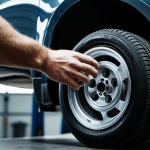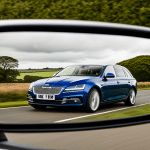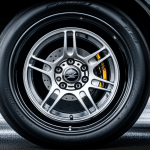Essential Pet Restraint Methods for Safe Travel
When considering car pet safety, selecting the right pet restraint is crucial. Common options include harnesses, carriers, and barriers, each offering unique benefits to ensure safe travel with pets. Harnesses attach to seatbelts and restrain pets during sudden stops, reducing injury risk. Carriers offer secure enclosed spaces, ideal for smaller or anxious pets. Barriers confine pets to the back seat or cargo area, preventing them from distracting the driver.
Proper installation and fit significantly impact restraint effectiveness. A loose harness or improperly installed carrier can fail to protect your pet or even become a hazard. Ensure the restraint fits your pet comfortably without restricting movement but tight enough to prevent excessive sliding or jumping.
Lire également : Top Digital Dashboard Upgrade Safety Tips for Your Vehicle
Secure containment is key to reducing driver distraction. Pets roaming freely in the car may divert attention, increasing accident risk. Restraints not only protect your pet but help maintain focus on driving. Investing in well-fitted, sturdy restraints promotes safety and peace of mind, making every journey smoother and safer for both owner and pet.
Essential Pet Restraint Methods for Safe Travel
Ensuring car pet safety starts with choosing the right pet restraint. The most effective types include harnesses, carriers, and barriers. Harnesses attach securely to seat belts, preventing pets from roaming freely, while carriers fully enclose them, offering protection during sudden stops. Barriers physically separate pets from the driver’s space, minimizing distraction and containing pets in a designated area.
Dans le meme genre : Essential Tips for Adjusting Tire Pressure in Lightweight Vehicles During a UK Heatwave
Proper installation and fit are crucial for each restraint type. A loose harness reduces protection and increases injury risk during a collision. Carriers should be the right size: snug enough to prevent movement but allowing the pet to change position comfortably. Poorly fitted restraints or ill-positioned barriers can compromise safety and increase the chance of driver distraction.
A secure pet restraint not only protects pets but also reduces distractions. When pets are safely contained, drivers can focus on the road without worrying about unexpected pet behavior. This focus boost significantly enhances overall travel safety for both humans and animals.
In sum, selecting a well-fitted harness, reliable carrier, or sturdy barrier effectively supports safe travel with pets and helps maintain concentration behind the wheel.
Pre-trip Preparation Steps for Pet-Friendly Journeys
Preparing your pet before hitting the road is vital for a smooth and safe trip. First, ensure thorough pet travel preparation by scheduling a health check. This includes confirming vaccinations and obtaining necessary documentation, which may be required for certain destinations or modes of transport.
Packing a road trip checklist tailored for your pet helps avoid last-minute stress. Essentials include food, water, medications, and familiar comfort items such as blankets or toys. Carrying enough supplies ensures your pet’s needs are met during unpredictable delays.
Familiarizing your pet with the vehicle beforehand eases anxiety during travel. Gradually introducing the car environment through short drives helps build comfort and reduces stress on longer journeys. This practice aligns with trip planning with pets to promote positive travel experiences for both pet and owner.
Proper preparation enhances overall safe travel with pets, reducing potential health and behavioural issues. A well-prepared pet is less likely to become restless, minimizing distractions while driving, and contributing to car pet safety. Taking these preparatory steps emphasizes your commitment to responsible and enjoyable pet travel.
Pre-trip Preparation Steps for Pet-Friendly Journeys
Preparing for safe travel with pets begins well before hitting the road. Pet travel preparation should include comprehensive health checks to ensure pets are fit for travel. Veterinarians can provide necessary vaccinations and health certificates, which are often required for long trips or crossing state lines. Carrying updated documentation helps avoid unexpected delays and promotes car pet safety.
Next, assembling a trip planning with pets checklist is vital. Essential items include ample food and fresh water, plus any medications your pet needs. Comfort items like familiar blankets or toys can ease anxiety during travel. Packing thoughtfully not only meets pets’ basic needs but also contributes to smoother journeys.
Familiarizing pets with the vehicle before long trips is another important step. Allowing pets to explore the car can reduce stress and help them associate the vehicle with safety and comfort. Gradual exposure, such as short drives followed by positive reinforcement, prepares pets mentally for extended travel.
Following these pre-trip preparation steps supports safe, calm, and enjoyable travel experiences for pets and owners alike, reinforcing essential routines that prioritize pet welfare and driver focus throughout the journey.
Recommended Safety Gear and Accessories
Selecting the right pet travel gear enhances both comfort and safety during trips. Among car accessories for pets, crash-tested crates and seatbelts stand out for their proven protection. Crash-tested crates provide a sturdy enclosure that absorbs impact, significantly reducing injury risk. Likewise, specially designed pet seatbelts secure harnesses to the vehicle’s seatbelt system, preventing sudden movement during abrupt stops or collisions.
Additional pet safety equipment such as padded harnesses, non-slip car mats, and spill-proof water bowls improve the travel experience by offering comfort and cleanliness. Padded harnesses reduce pressure points, while mats maintain cleanliness and limit sliding. Spill-proof bowls keep hydration accessible without messes, essential during long journeys.
Choosing certified and tested gear assures reliability. Always ensure your pet travel gear fits your pet’s size and temperament. Comfort combined with properly certified safety equipment strengthens overall car pet safety, encouraging stress-free adventures.
Investing in quality car accessories for pets not only protects your furry friend but also contributes to your peace of mind. The right equipment balances safety and comfort, ensuring every road trip is both secure and enjoyable.
Recommended Safety Gear and Accessories
Choosing the right pet travel gear is pivotal for ensuring car pet safety and smooth, secure journeys. Among the best options are crash-tested crates designed to absorb impact, offering superior protection compared to regular carriers. Coupled with seatbelt attachments or harnesses certified for automotive use, these tools help restrain pets effectively during sudden stops or collisions, significantly boosting overall safe travel with pets.
Beyond safety, using proper car accessories for pets adds comfort and cleanliness to trips. Items like non-slip mats prevent crates or carriers from shifting, while washable seat covers protect upholstery from fur and spills. Travel bowls designed to minimize tipping ensure that pets hydrate safely without creating messes.
Top-rated pet safety equipment often includes adjustable harnesses that fit snugly but comfortably, preventing escape while allowing movement. Crash-tests validate gear reliability, so selecting certified products guarantees better protection.
Integrating these accessories into your pet travel gear setup enables safer, more comfortable rides. Prioritizing certified safety features and practical comforts ensures every journey is stress-free and focused on protecting your pet’s well-being.
Essential Pet Restraint Methods for Safe Travel
Choosing the proper pet restraint is fundamental for car pet safety and enables safe travel with pets. Harnesses, carriers, and barriers represent the primary restraint types, each offering distinct safety advantages. Harnesses, when attached to seatbelts, securely limit a pet’s movement and reduce injury risks during sudden stops. Carriers enclose pets entirely, affording protection and comfort, especially suited for smaller or anxious animals. Barriers prevent pets from entering the driver’s area, lowering distractions and containing pets safely in designated zones.
Proper installation and fit greatly influence restraint effectiveness. A harness that is too loose or an improperly secured carrier compromises safety by allowing excessive movement, increasing injury chances. Restraints should fit snugly, balancing freedom of motion with firm security to prevent pets from sliding or jumping, thus maximizing protection.
Effective pet restraints also play a vital role in reducing driver distraction. Secure containment keeps pets from interfering with driving activities, enabling drivers to maintain focus on the road. Therefore, well-fitted harnesses, crash-tested carriers, or sturdy barriers not only safeguard pets but enhance overall vehicle safety by minimizing distractions during travel.
Strategies to Prevent Driver Distraction from Pets
Minimizing pet distraction is essential for safe driving with pets. Training pets to stay calm and stationary helps reduce sudden movements that could divert attention. For example, consistent practice of sitting or lying down calmly in the vehicle prepares pets for travel routines, supporting focused driving.
Proper placement of pet carriers or pet restraints further limits interference. Positioning carriers in the back seat or cargo space prevents pets from approaching the driver or mingling between seats, which can cause distraction. Similarly, using secured harnesses connected to seatbelts restrains movement without causing discomfort.
Establishing in-car routines also helps keep pets occupied and stress-free. Providing chew toys, familiar blankets, or calming treats can engage pets during the drive, reducing restlessness. Regularly scheduled breaks allow pets to stretch and relieve themselves, addressing their needs so they remain relaxed and less disruptive.
By combining training, strategic restraint placement, and engagement during travel, drivers can markedly enhance car pet safety and focus. These travel safety tips help maintain a safe environment, balancing pet comfort with attentive driving.
Managing Pet Needs and Comfort on the Road
Ensuring traveling pet comfort requires regular attention to your pet’s physical and emotional needs during trips. One essential aspect is scheduling consistent pet breaks while traveling. These breaks allow pets to stretch, hydrate, and relieve themselves, preventing discomfort and restlessness that can lead to increased anxiety or distraction. Ideally, breaks should occur every two to three hours, depending on the pet’s age and health.
Maintaining a comfortable environment inside the vehicle is equally important. Temperature regulation helps avoid overheating or chilling, which is critical for pet care during trips. Use sunshades, keep air flowing, and avoid leaving pets unattended in parked cars. Offering familiar items like blankets or toys during travel supports emotional comfort and reduces stress.
Food choices also impact pet comfort. Avoid giving pets rich or unfamiliar treats on the road to prevent digestive issues. Instead, pack routine meals and safe snacks aligned with your pet’s dietary needs. Thoughtful feeding schedules, combined with hydration, contribute greatly to a positive travel experience.
By prioritizing breaks, comfort, and diet, you can ensure safe, calm journeys that respect your pet’s wellbeing throughout your adventures.






